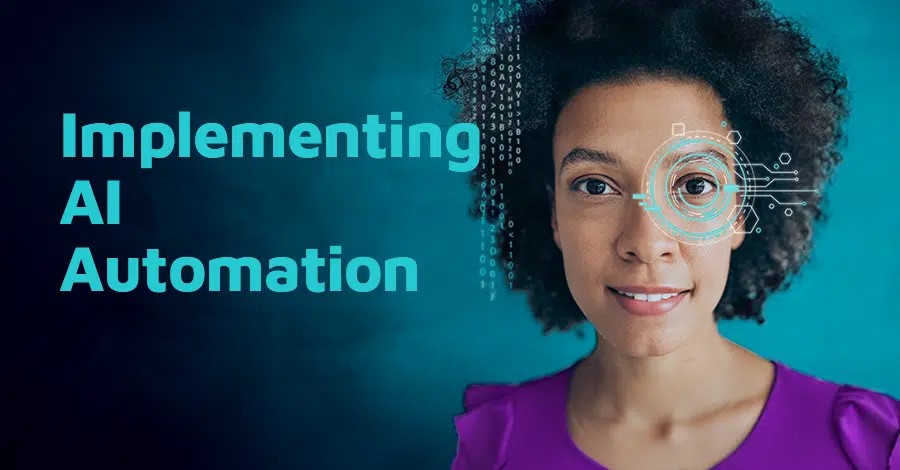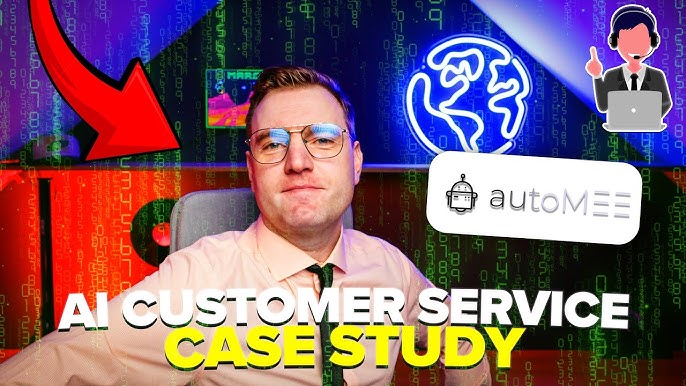
Introduction
Today, companies need to move fast to stay ahead. AI tools can help by doing routine work so your team can be more creative. For example, chatbots talk to customers, and smart programs look at data to spot trends. By handling repetitive jobs, AI frees people to plan and dream up new ideas.
In this article, you’ll see easy-to-use AI tools that make work smoother, help teams do more complex tasks, and boost growth. You’ll learn how to pick the right tool, set it up step by step, and check if it’s helping your profits. Let’s explore how AI can change the way your business financial services operates.
What Is AI-Driven Automation?

AI-driven automation means using smart computer programs to do jobs people used to do. At first, simple automation just followed fixed rules to repeat the same tasks. But AI can actually learn and get better over time.
For example, an AI can read your customer’s emails, sort them by topic, answer common questions, and even pick up new ways people write. As it works more, it notices patterns like when you sell a lot of a product or service and can warn you before you run out of stock. It can also read invoices or suggest products customers might like by looking at pictures and words.
Because AI adapts instead of just following a script, it can handle many different tasks and support team. This means businesses can let AI do the repetitive work cheaply and quickly, freeing people to solve tricky problems and think up creative ideas.
Benefits of AI Innovations in Business

When you automate processes tasks with AI, you free your team to focus on higher-value work. Routine chores like data entry, invoice processing, and customer replies can be handled in seconds. This leads to fewer mistakes and faster service. AI can also spot patterns in sales, website visits, or production data that humans might miss and improve customer satisfaction. By acting on these insights, companies save money, boost productivity, and make better decisions. Over time, the gains from automation compound, helping businesses scale up without a matching rise in costs.
Implementing AI brings clear benefits:
- Time Savings: Automating tasks cuts hours of manual work each week.
- Error Reduction: AI follows rules precisely, reducing costly mistakes.
- Cost Efficiency: Lower labor costs for routine tasks free budget for strategic hires.
- Scalability: AI systems handle growth without proportional headcount increases.
- Data-Driven Decisions: Predictive insights guide smarter resource allocation and marketing strategies.
- Customer Satisfaction: Faster response times and personalized interactions build loyalty.
These gains help businesses scale fast by reallocating resources to innovation and improve the customer experience.
Role of AI in Daily Operations

AI tools now touch nearly every part of a company’s workflow. In marketing, algorithms tailor ads to the right audiences. In finance, AI flags suspicious transactions or predicts cash flow trends. HR teams use AI to screen resumes and schedule interviews. Operations departments rely on smart sensors and predictive models to manage inventory and avoid downtime on equipment. Even senior leaders get AI-driven dashboards that summarize key metrics in real time. By weaving automation into daily tasks, businesses run more smoothly and react faster to new challenges.
Key AI Automation Tools for Businesses

Several AI automation tools lead the market:
- Robotic Process Automation (RPA) platforms automate rule-based tasks. They mimic human clicks and keystrokes to fill forms and move data.
- Chatbots and Virtual Assistants use natural language processing to handle customer and employee questions 24/7.
- Predictive Analytics tools forecast demand, churn risk, and equipment failures. They analyze historical data to guide decisions.
- Intelligent Document Processing reads and extracts data from PDFs and images, speeding up billing and compliance.
- AI-Powered CRM systems score leads, suggest next actions, and personalize communications at scale.
Each tool fits different needs. RPA shines in finance and HR tasks. Chatbots excel in customer support. Predictive analytics suits sales and operations. Business process automation combines these tools into a cohesive stack.
Automating Workflows: Step by Step

To automate workflows effectively, follow these steps:
- Identify Repetitive Tasks: List daily tasks that waste time—data entry, report generation, or email triage.
- Evaluate Tool Fit: Match tasks to AI tools. Use RPA for structured tasks, chatbots for text queries, and analytics for data insights.
- Pilot Small Projects: Start with one process. For instance, automate invoice approvals. Measure time saved and error reduction.
- Train and Test: Provide AI systems with real examples. Test in a sandbox until performance meets standards.
- Scale Gradually: Roll out to more departments. Share best practices and adjust based on feedback.
- Monitor Continuously: Use dashboards to track performance metrics—processing time, error rates, and user satisfaction.
This structured approach ensures smooth adoption and clear ROI.
Measuring AI Impact on Business

Track clear metrics to prove AI value:
- Process Time Reduction: Compare task completion times before and after automation.
- Error Rate: Monitor declines in mistakes for automated vs. manual processes.
- Cost Savings: Calculate labor cost reductions and reallocated hours.
- Customer Metrics: Measure changes in response times, resolution rates, and satisfaction scores.
- Revenue Growth: Link predictive analytics to sales uplift or churn reduction.
Use dashboards to share these metrics regularly. This builds support for further business process automation investments.
Selecting the Right AI Tools

With dozens of AI services on the market, it helps to start with a clear wish list. Write down the exact problems you want to solve better customer replies, faster invoice processing, or smarter marketing targeting. Look for tools that fit your current software stack and offer easy setup, such as plug-ins for popular platforms. Try free trials or demos to test how intuitive each tool feels and how well it processes your real data. Read reviews from similar companies to learn about hidden costs or support issues. A methodical choice process ensures you pick tools your team can adopt quickly and affordably.
Implementation Tips for AI Automation

Begin by choosing one clear task to automate, such as sorting incoming emails or generating basic sales reports. Gather data from that task and feed it into your AI tool to see how well it handles real information. Offer short training sessions so your team knows how to use the new system and can spot any issues. Track its performance daily at first—note any errors or delays—and adjust settings to improve accuracy. Move step by step: once one task runs smoothly, pick the next one. This steady rollout builds confidence and keeps disruptions to a minimum as you bring AI into your daily work.
Case Study: AI in Customer Support

A mid-sized e-commerce firm faced rising support tickets as sales grew. They deployed an AI chatbot to handle order status queries and refunds. The bot integrated with their CRM and order management system.
Within three months, the chatbot managed 60% of incoming tickets. Average response time dropped from four hours to two minutes. Human agents focused on complex issues, boosting satisfaction scores by 25%. The company scaled support without hiring new staff, exemplifying AI-driven scaling in action.
Overcoming Implementation Challenges
Despite the clear gains, bringing AI into a business isn’t always simple. Companies need clean, well-organized data before algorithms can work well. Many teams lack staff with the right skills in data science or machine learning. Upfront costs for tools, training, and change management can feel high, especially for smaller firms. There are also concerns around data privacy and bias—if the AI learns from flawed data, it may make unfair or wrong recommendations. Overcoming these hurdles requires careful planning, strong leadership, and a willingness to learn from early mistakes.
AI projects face hurdles:
- Data Quality: AI needs clean, well-structured data. Invest in data cleansing before deployment.
- Change Management: Employees may resist new tools. Offer training and highlight benefits.
- Integration Complexity: Legacy systems can block automation. Use APIs or middleware for smooth data flow.
- Cost Concerns: Initial investment can be high. Start with high-impact pilots to prove value.
- Ethical Considerations: Ensure AI decisions are transparent and bias-free.
Address these issues early. Engage stakeholders across IT, operations, and leadership for successful rollout.
Future Trends in AI Business Automation

Looking ahead, AI will become even more powerful and accessible. Advances in natural language processing and computer vision will let systems understand documents, images, and speech as easily as humans do. “AutoML” platforms will allow non-experts to build custom models with minimal coding. Real-time decision engines will adjust pricing, customer interactions, supply chains, or marketing campaigns on the fly. As AI blends more deeply into business software, the line between human and machine workflows will blur. Companies that embrace these leverage ai innovations early will have the edge in speed, cost efficiency, and innovation in business operations, ready to scale faster than ever before.
- Hyperautomation: Combining multiple AI and automation tools for end-to-end process coverage.
- AI-Driven Collaboration: Smart assistants summarizing meetings and managing tasks automatically.
- Edge AI: Running AI models on local devices for real-time decisions without internet lag.
- Explainable AI: Tools that show how they reached a decision, boosting trust and compliance.
- AI Ethics and Governance: Frameworks to ensure fair, transparent, and safe AI use in business.
Staying ahead of these AI innovations in business will keep your operations cutting edge and ready for new challenges.
Comparative Table: Common AI Automation Use Cases
| Use Case | AI Tool | Key Benefit | Ideal For |
|---|---|---|---|
| Invoice Processing | RPA + Intelligent OCR | 70% time reduction | Finance & Accounting |
| Customer Chat Support | AI Chatbot | 2-minute response time | E-commerce, Telecom |
| Lead Scoring | Predictive Analytics | 30% higher conversion rates | Sales & Marketing |
| HR Onboarding | RPA + Chatbot | Faster new hire processing | HR Departments |
| Inventory Forecasting | Machine Learning Models | 15% stock-out reduction | Retail & Manufacturing |
This table helps you match processes to AI tools for quick wins.
Conclusion
AI innovations in business empower companies to automate workflows and scale fast by handling repetitive tasks, delivering insights, and enhancing customer experiences. Adopting the right AI automation tools from RPA and chatbots to predictive analytics unlocks time savings, error reduction, and cost efficiency. Start small with focused pilots, measure clear metrics, and expand strategically. Overcome data and integration challenges with strong leadership and training. As you embrace intelligent automation, you free your team to focus on growth and innovation.
Call to Action
Ready to transform your business? Book a free AI strategy session today and discover how to automate your workflows for rapid scaling!










